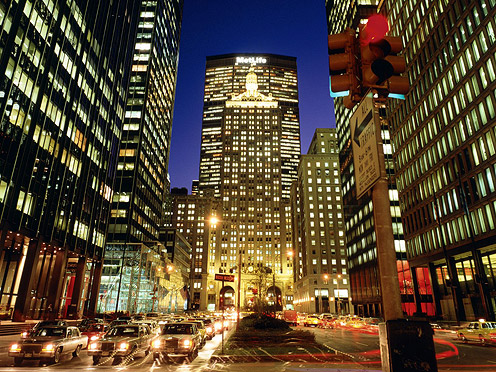Excessive noise is bad not only for your hearing. According to WHO, about 2% of all deaths worldwide are caused by the diseases associated with excessive noise.

Which Health Problems Are Caused by Noise?
Modern medicine considers loud sounds to be one of the most formidable enemies of human health. In ecology, there is even the concept of “noise pollution.” In addition to hearing disorders, cardiovascular disease and hypertension may occur. Metabolism, the thyroid gland, and the brain suffer from certain disorders. Memory and physical performance are reduced. Stress from noise leads to insomnia and loss of appetite. High levels of noise can cause peptic ulcer disease, gastritis, and mental illness.
How Can Noise Harm Your Health?
Passing the conductive ways of the sound analyzer, noise affects various centers of the brain, resulting in disruptions of various body systems. According to Austrian scientist Griffith, noise becomes a cause of premature aging in 30 cases out of 100 and shortens the life of the people in big cities for 8-12 years. The WHO experts consider the sound of 85 dB, influencing the person daily for the maximum of 8 hours, to be safe for health.
25-30 decibels
This noise level is comfortable for humans. This is a natural soundscape, which life is impossible without.
As for the loudness, it is comparable to the rustle of leaves on the trees – 5-10 dB, the sound of wind – 10-20 dB, whisper – 30-40 dB, preparing food on a plate – 35-42 dB, and filling the tub – 36-58 dB.
We used to think that silence means the lack of sounds, but as it turns out our brain clearly sees and hears it as well as other sounds.
60-80 decibels
If this noise acts on a regular basis, it causes human autonomic nervous system disorders and tiring, even after brief exposure to the noise.
A large department store – 60 dB, a washing machine – 68 dB, a vacuum cleaner – 70 dB, the piano – 80 dB, a baby crying – 78 dB, a car – up to 80 dB.
The noise level is perceived subjectively, and it may even be addictive. But in case of developing autonomic responses, adaptation is not observed.
Permanent traffic noise (65 dB) leads to hearing loss. Street noise disrupts the hearing center in the brain and affects behavior. This is the conclusion drawn by the researchers from the University of California at San Francisco.
90-110 decibels
The sound is perceived as painful. It leads to hearing loss. Continuous impact of the 95 dB or louder noise disrupts vitamin balance, carbohydrates, proteins, cholesterol, and water-salt metabolism. With the power of the sound equal to 110 dB, the so-called “noise intoxication” appears, and aggression develops.
Motorcycles, truck engines and the Niagara Falls produce the noise of 90 dB, a lawn mower is as noisy as 100 dB, a concert and disco reaches the level of 110-120 dB.
According to state standards, the production accompanied by such noise is harmful, and the workers should undergo regular medical examination. The people working in these conditions are 2 times more likely to suffer from hypertension. Busy working professionals are encouraged to take vitamins B and C.
If the player produces full power, the effect of the sound on the ears equals 110 dB. The reason for hearing loss is evident.
115-120 decibels
This is the “threshold of pain” when the sound itself is almost inaudible, and one just feels pain in his ears.
The leading institutions that create such a noise are airports and railway stations. The volume of a freight train in motion is more than 100 dB. As the train approaches the platform, the noise level on the platform is slightly less than 95 dB. Even a kilometer away from the airport runway, the noise produced by the landing or taking off airliners is greater than 100 dB.
The noise level in the subway can reach 110 dB at the stations and 80-90 dB – in the cars.
You should not attend karaoke bars too often. The level of acoustic load there exceeds the permissible limits, reaching 115 dB. After such extreme vocals, the hearing is temporarily reduced by 8 dB.
140-150 decibels
The noise is almost unbearable, loss of consciousness is possible, and eardrums can burst.
When the jet engines of an aircraft start, the noise level ranges from 120 to 140 dB, and in case of the launch of a rocket, a gun salute, or a rock concert next to a huge powerful speaker it reaches 145 dB.
180 dB or more
It is deadly to humans. Even metal begins to break.
The shock wave from a supersonic aircraft produces 160 dB, a shot of the 122-mm howitzers causes the noise equal to 183 dB, while a powerful explosion of the volcano is 180 dB.
According to the research conducted by the American experts, the loudest sound in the animal world is produced by the blue whale – 189 dB.
Sleep & Hearing
The sensitivity of hearing during sleep increases by 10-14 dB. According to WHO standards, cardiovascular disease may occur at night when people are constantly exposed to noise loudness of 50 dB or more. The noise reaching 42 dB can lead to insomnia, while the noises at the level of 35 dB start to be irritating.











